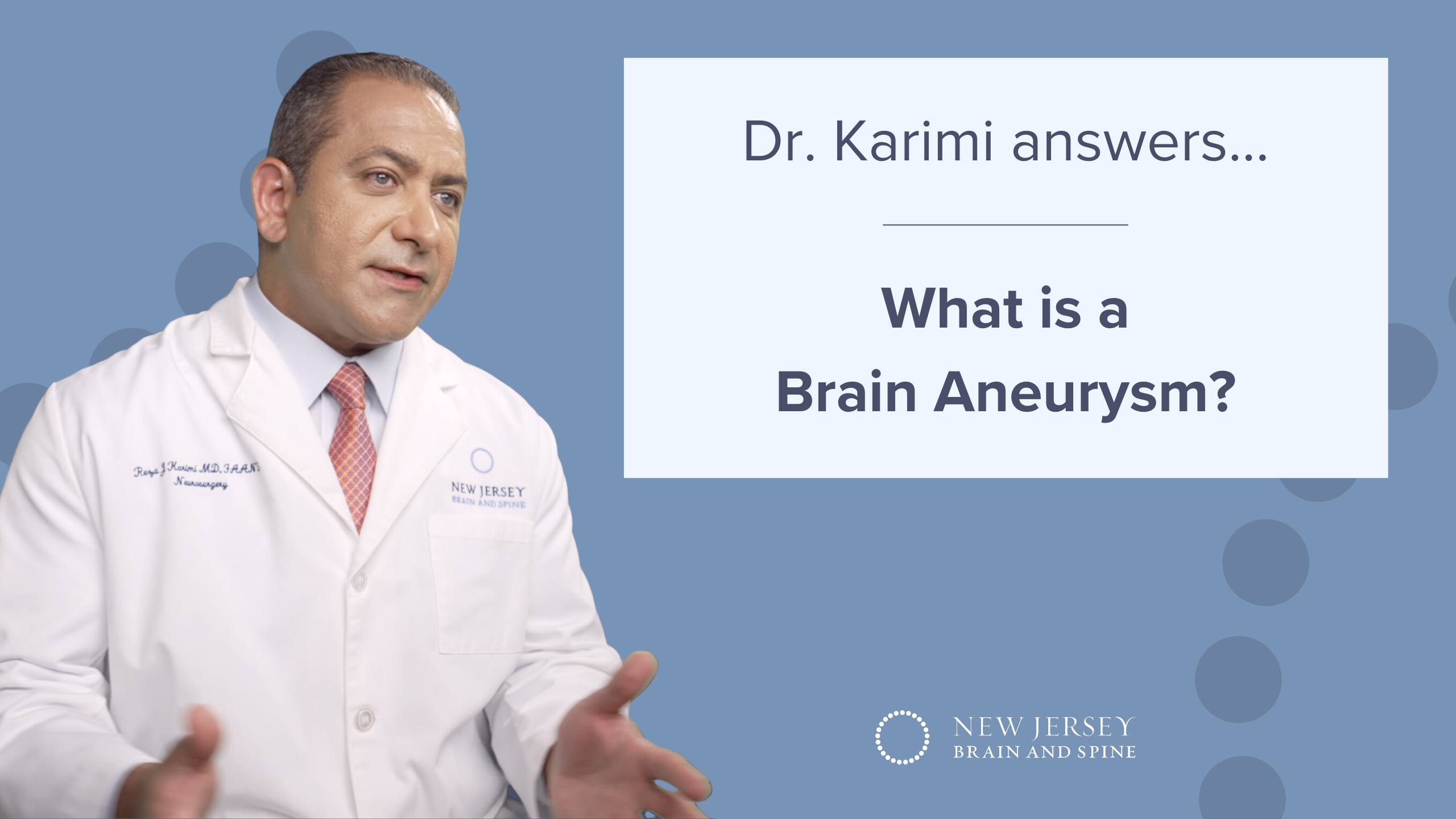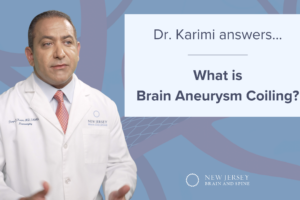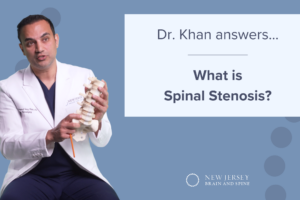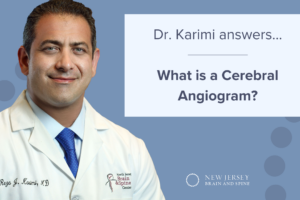
In this video, Dr. Karimi discusses brain aneurysms, shedding light on this complex and nuanced condition and treatment that should only be done by experienced vascular neurosurgeons who are skilled in all available treatments.
Transcript
There are several ways to treat brain aneurysms.
Ultimately all of them accomplish the same thing, to shut down blood flow into and out of the aneurysm.
And therefore decrease its risk of bleeding for the patient’s lifetime.
Clipping of an aneurysm involves microsurgery in placing a clip across the neck or opening of the aneurysm to essentially shut it down and not allow any more blood flow into that aneurysm.
Coiling accomplishes the same thing but it’s done from an inside out approach.
Filling the aneurysm with metallic coils in order to cause the blood to clot off and therefore no further blood flow into or out of the aneurysm.
There’s some patients who require more than just coiling.
Some patients require a stent which is a hollow mesh tube in the normal blood vessel to support the coils, keep them in the aneurysm, and prevent any blockage of the normal blood vessels from occurring when the coils are placed.
And in other cases we have special types of stents called flow diverting stents that are placed only in the artery and over time they divert, flow away from the aneurysm causing it to clot off, heal, and disappear permanently.
Clipping of an aneurysm is a time-tested standard treatment that is fairly low risk.
It’s certainly more invasive than having the aneurysm coiled but there are a lot of patients in which clipping is the best and safest option compared to coiling.
That depends on the shape of the aneurysm.
Is reconstruction of the branch vessels around the aneurysm needed?
That’s something that often cannot be done with coils or stents and only can be done through micro surgery.
Typically clipping of an aneurysm is reserved for the younger patients as compared to the less invasive endovascular techniques.
Nowadays we’re treating aneurysms using endovascular techniques about 98% of the time.
It’s a small fraction of patients in which we determine surgery is the best treatment compared to endovascular treatment.
The risks of coiling a brain aneurysm overall are fairly low but they are serious risks.
In general that risk is under 4 to 6% in most patients depending upon the complexity of their anatomy and their aneurysm.
The risks of coiling an aneurysm include the risk of a stroke, injury to the blood vessel or in very rare cases the aneurysm can bleed while it’s being treated.
Fortunately that is a very rare occurrence that we don’t often see but we are always prepared to deal with at the time of the procedure.


